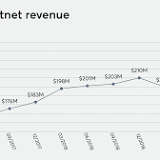Astronomers Observe Result of Violent Stellar Merger

Most stellar magnetic fields — including the Sun’s — are produced by a dynamo that is generated in interior layers undergoing convection. Massive stars (8 or more solar masses) do not have convective interiors, so it has been unclear why about 7% have magnetic fields. Using ESO’s Very Large Telescope Interferometer, astronomers have observed a binary massive star called HD 148937 and found that one member of the system is magnetic and appears to be younger than its companion. They argue that the system originally contained three or more stars and then experienced a merger that produced the magnetic star and made it appear younger.
This image, taken with ESO’s VLT Survey Telescope, shows the beautiful nebula NGC 6164/6165. The nebula is a cloud of gas and dust surrounding a pair of stars called HD 148937. Image credit: ESO / VPHAS+ Team / CASU.
HD 148937 is located approximately 3,800 light-years away in the constellation of Norma.
Also known as ESO 226-13 or TIC 21931623, the system is made up of two stars much more massive than the Sun and surrounded by a beautiful nebula, a cloud of gas and dust.
“A nebula surrounding two massive stars is a rarity, and it really made us feel like something cool had to have happened in this system. When looking at the data, the coolness only increased,” said Dr. Abigail Frost, an astronomer at ESO.
“After a detailed analysis, we could determine that the more massive star appears much younger than its companion, which doesn’t make any sense since they should have formed at the same time.”
“The age difference — one star appears to be at least 1.5 million years younger than the other — suggests something must have rejuvenated the more massive star.”
Another piece of the puzzle is the nebula surrounding the HD 148937 system, known as NGC 6164/6165 or the Dragon’s Egg.
The nebula is 7,500 years old, hundreds of times younger than both stars. It also shows very high amounts of nitrogen, carbon and oxygen.
This is surprising as these elements are normally expected deep inside a star, not outside; it is as if some violent event had set them free.
To unravel the mystery, Frost and her colleagues assembled nine years’ worth of data from the PIONIER and GRAVITY instruments, both on ESO’s Very Large Telescope Interferometer (VLTI).
They also used archival data from the FEROS instrument at ESO’s La Silla Observatory.
“We think this system had at least three stars originally; two of them had to be close together at one point in the orbit whilst another star was much more distant,” said KU Leuven’s Professor Hugues Sana.
“The two inner stars merged in a violent manner, creating a magnetic star and throwing out some material, which created the nebula.”
“The more distant star formed a new orbit with the newly merged, now-magnetic star, creating the binary we see today at the centre of the nebula.”
“The merger scenario was already in my head back in 2017 when I studied nebula observations obtained with ESA’s Herschel Space Telescope,” said Dr. Laurent Mahy, an astronomer at the Royal Observatory of Belgium.
“Finding an age discrepancy between the stars suggests that this scenario is the most plausible one and it was only possible to show it with the new ESO data.”
“This scenario also explains why one of the stars in the system is magnetic and the other is not — another peculiar feature of HD 148937 spotted in the VLTI data.”
“At the same time, it helps solve a long-standing mystery in astronomy: how massive stars get their magnetic fields.”
“While magnetic fields are a common feature of low-mass stars like our Sun, more massive stars cannot sustain magnetic fields in the same way. Yet some massive stars are indeed magnetic.”
A paper on the findings was published in the journal Science.
_____
A.J. Frost et al. 2024. A magnetic massive star has experienced a stellar merger. Science 384 (6692): 214-217; doi: 10.1126/science.adg7700


 United Kingdom
United Kingdom Argentina
Argentina  Australia
Australia  Austria
Austria  Brazil
Brazil  Canada
Canada  Germany
Germany  Ireland
Ireland  Italy
Italy  Malaysia
Malaysia  Mexico
Mexico  New Zealand
New Zealand  Poland
Poland  South Africa
South Africa  United States
United States 























